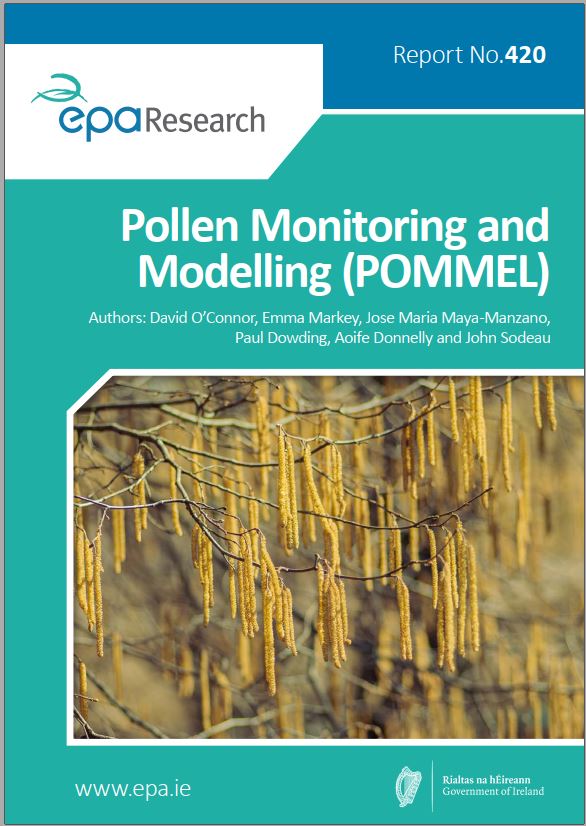Authors: David O’Connor, Emma Markey, Jose Maria Maya-Manzano, Paul Dowding, Aoife Donnelly and John Sodeau
Summary: A reliable pollen forecast and monitoring system is a valuable tool to help allergy sufferers avoid unnecessary exposure to allergenic pollen and to optimise drug treatments by allergists. Ireland does not have a monitoring system in place and the forecast currently used is provided by the University of Worcester (UK). This project seeks to address this by undertaking the required monitoring and developing a forecast model.

Watch the project highlights video
A reliable pollen forecast and monitoring system is a valuable tool to help allergy sufferers avoid unnecessary exposure to allergenic pollen and to optimise drug treatments by allergists. As Ireland has no monitoring system in place, forecasts based on Irish data are not available, and the forecast currently used is provided by the University of Worcester (UK).
As a result, the impacts of allergenic pollen on the health of the Irish population and any links to climate forcing remain understudied. The health implications for those who suffer from allergic rhinitis and asthma can be substantial, and this, in turn, places undue pressure on national healthcare services.
This project seeks to address the problem by undertaking the required monitoring and developing a forecast model.
The direct impact of pollen on society and business can be seen throughout the year, with diminished quality of life and loss of productivity. The consequences can be significant and far-reaching, with financial burdens placed on employees and employers alike.
While most hay fever sufferers experience symptoms more irritating than debilitating, the same cannot be said of those who also have asthma. With Ireland having the fourth highest incidence of asthma in the world, this group constitutes a significant sub-section of the population. Many find that their condition is exacerbated by spores and chemical particulates as well as pollen, resulting in significant strain on public health infrastructure.
In the light of these impacts on the general public, our society must develop “early warning” systems for bioaerosol detection at both national and local levels. POMMEL sets about the task of developing such systems to minimise pollen exposure of those who are negatively affected.
POMMEL produced the first Irish pollen network, and in doing so, sampled and determined the concentrations of ambient pollen species in both rural (Carlow) and urban (Dublin) settings. This was done with both traditional impaction methodologies and real-time light-scattering and light-induced fluorescence (novel) approaches. The traditional methods highlighted the difference between the sites, with grass pollen more prevalent at the rural site.
These data, along with pollen data collected in the 1980s, were collated to create the first pollen calendar for Ireland. This reveals the start and end of the season, and peak release periods, for each pollen type and highlights the most allergenic species present in the Irish environment.
The novel approaches showed decent correlation when compared with the impaction methodologies and had the added benefit of outputting their data at a higher time resolution and in a more timely manner. These data, in combination with other air quality data, could be useful for air quality modelling and risk assessment. However, as these approaches could not differentiate between pollen species, they are more useful as bulk pollen monitors than as species-specific detectors.
https://www.epa.ie/media/epa-2020/research/epa-funded-research/Report-cover-420.jpg